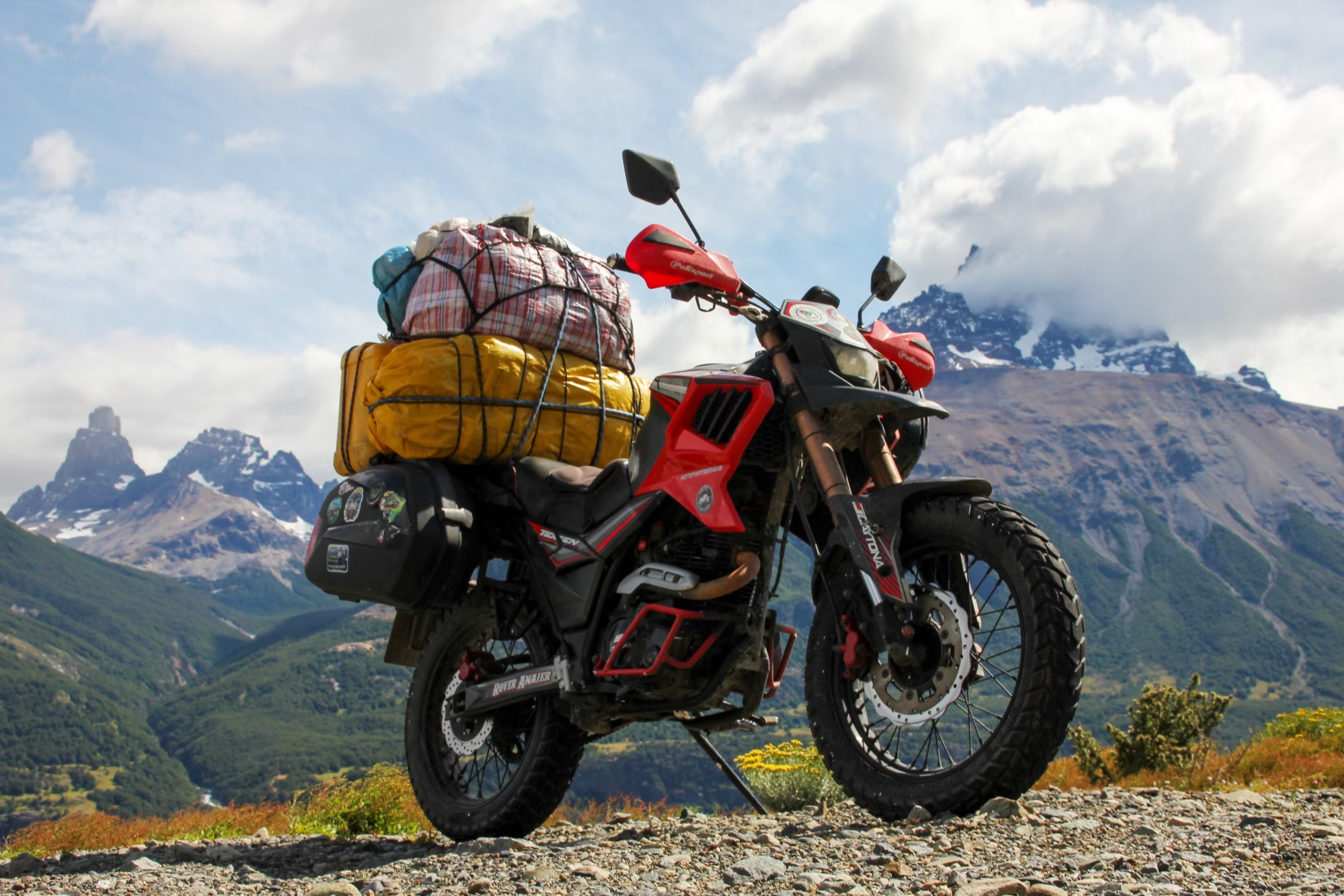Introduction
Adventure travel Destinations blends exploration, physical activity, and cultural immersion. Many Americans want to break free from routine vacations. Adventure travel gives them life-changing experiences that create lasting memories and help them grow as individuals. You might climb a mountain peak, navigate white-water rapids, or trek through remote wilderness. Whatever you choose, adventure travel pushes your limits and rewards you with amazing experiences.
The Adventure Travel Trade Association reports that adventure tourism has boomed in the last ten years. They’ve seen a significant 65% jump in travelers looking to combine physical activity, nature, and cultural exchange. This considerable increase shows that we all want to unplug from our digital lives and reconnect with nature and ourselves.
As we check out the world’s coolest adventure spots, remember that the best part of an adventure isn’t always the place you go, but how it changes you. Let’s kick off our trip to find the most amazing adventures on Earth for bold and curious explorers.
What Makes Travel an Adventure?
Adventure travel goes beyond regular tourism by including three main things: physical activity, getting to know different cultures, and connecting with nature. While people define it, adventure travel involves some level of:
- Physical challenge: From everyday activities like hiking and kayaking to extreme sports like rock climbing or mountaineering
- Controlled risk: Adventures often push you out of your comfort zone, but with the proper prep and guidance
- Cultural engagement: Real connections with local communities and traditions
- Natural environment connection: Seeing untouched landscapes and ecosystems up close
- Transformative experiences: Trips that shift your outlook and help you grow as a person
You can split adventure travellers into “soft adventurers” and “hard adventurers.” Soft adventurers like milder activities and cozy places to stay. Rugged adventurers want tough physical challenges, often in far-off places. National Geographic found that about 70% of adventure travellers are “soft adventurers.” This means more people with different fitness levels and experience can try these adventures.
Top Adventure Travel Destinations by Region
North America
1. Moab, Utah
Moab’s red rock scenery gives outdoor lovers lots to do. The area has two incredible national parks—Arches and Canyonlands. It also has tons of Bureau of Land Management land. This makes it great for mountain biking, rock climbing, and off-road fun.
Experience you can’t miss: Ride the famous Slickrock Bike Trail, a 10.5-mile technical route on old Navajo sandstone. Mountain bikers from all over the world come here to test their skills.
The best time to go is spring (March-May) and fall (September-October), which have the nicest weather and fewer tourists than summer.
2. Denali National Park, Alaska
Denali National Park, home to the highest mountain in North America, covers six million acres of untamed land. It gives visitors unique chances to backpack in the wilderness, see wildlife, and climb mountains. The park has strict rules to protect nature. It limits cars to keep the environment clean and unspoiled.
Experience you can’t miss: Hop on a shuttle bus for the 92-mile Denali Park Road trip. You’ll see more wildlife the further you go into the park.
Best time to go: You’ll have the best chance to get in from June to mid-September. July is excellent for spotting animals.
3. Pacific Northwest Trail
This trail runs 1,200 miles from Montana’s Continental Divide to Washington’s Olympic Coast. It goes through three national parks and seven national forests. You can climb mountains or hike along the coast, making it one of America’s most varied long trails.
Must-try experience: Take a hike through Washington’s North Cascades National Park to see some of the most striking mountain views in the contiguous United States.
When to visit: July to September offer the best weather conditions for long trips.
South America
1. Patagonia, Argentina & Chile
The wild area covering southern Argentina and Chile boasts some of the most breathtaking scenery on Earth. From the tall granite peaks of Torres del Paine to the immense Perito Moreno Glacier, Patagonia stands for pure adventure travel.
Must-try experience: Walk the W Circuit in Torres del Paine National Park, a 5-7 day journey showing off Patagonia’s most famous landscapes.
When to visit: The months from December to February offer the most stable weather conditions. If you prefer smaller crowds, consider staying in November or March.
2. Amazon Rainforest, Peru
The Amazon in Peru boasts incredible biodiversity and chances to see wildlife up close. Thrill-seekers can explore by boat trips on the river, hiking through the jungle, or staying at eco-lodges in remote areas. These adventures also give insights into conservation work and the lives of native peoples.
Must-try experience: Embark on a multi-day boat trip from Iquitos to Pacaya-Samiria National Reserve. People call this place “The Mirrored Forest” because of its shiny waterways.
When to visit: May to October (dry season) allows easier hiking, while November to April (rainy season) provides higher water levels to explore by boat.


3. Galápagos Islands, Ecuador
This famous island group, where Charles Darwin developed his theory of evolution, offers unique wildlife encounters you can’t find anywhere else. Adventure activities include swimming with sea lions, climbing active volcanoes, and biking across strange landscapes.
Must-try experience: Swim at Kicker Rock (León Dormido) near San Cristóbal Island, where hammerhead sharks, turtles, and colourful fish move through a striking volcanic formation.
When to visit: Visit any time of the year, but choose December-May for warmer water and calmer seas.
Europe
1. Norwegian Fjords
The western coast of Norway boasts some of the world’s most stunning fjords—deep, narrow inlets with tall cliffs and snow-topped mountains on either side. These breathtaking landscapes let you hike, kayak, climb, and sail.
Must-try experience: Trek to Trolltunga (Troll’s Tongue), a rock that sticks out over Lake Ringedalsvatnet, giving you one of Norway’s most famous views.
When to visit: Pick June through September for the best weather and full access to hiking paths.
2. Dolomites, Italy
This UNESCO World Heritage site in northern Italy has 18 peaks above 3,000 meters, creating one of Europe’s most striking mountain scenes. The area offers top-notch hiking, climbing, and via ferrata routes—protected climbing paths built during World War I.
Must-try experience: Hike the Tre Cime di Lavaredo circuit, a day-long loop around three of the Alps’ most iconic peaks.
When to visit: July through September gives the best hiking weather; winter brings great skiing.
3. Camino de Santiago, Spain
This old pilgrim path across northern Spain has become one of Europe’s top long walks. Most people take the Camino Francés, about 500 miles from France’s border to Santiago de Compostela.
Must-try experience: Walk the last part to Cape Finisterre on the Atlantic shore—people used to think this was the “world’s end” and see it as a spiritual finish to their trip.
When to visit: Go from April to June or September to October for nice weather and fewer tourists than in the busy summer.
Asia
1. Himalayas, Nepal
Nepal’s Himalayan region boasts the world’s most famous hiking trails, including the route to Everest Base Camp and the Annapurna Circuit. Beyond these well-known paths, hikers can explore countless hidden treks through isolated villages where old mountain ways of life continue.
Must-try experience: Hike the Annapurna Circuit, a 100-150-mile journey that crosses the 17,769-foot Thorong La Pass and shows notable changes in nature and culture.
When to visit: October-November and March-April offer the steadiest weather.
2. Bali, Indonesia
Bali is famous for its beaches and resorts, but it also gives thrill-seekers great chances to have fun, from riding top-notch waves to climbing active volcanoes. The island’s deep cultural roots add meaning to these physical challenges.
Must-try experience: Climb Mount Batur overnight to see the sunrise. This somewhat challenging hike pays off with amazing views of Lake Batur and nearby islands.
When to go: The dry months from April to October give you the best outdoor fun opportunities.


3. Zhangjiajie National Forest Park, China
The strange sandstone towers of Zhangjiajie made people think of the floating mountains in “Avatar.” This UNESCO World Heritage site lets you hike through foggy forests and walk on glass bridges over deep valleys.
Must-try experience: Step onto the Zhangjiajie Grand Canyon Glass Bridge. It’s the world’s highest and longest see-through bridge hanging 980 feet above the canyon.
When to visit: Visit from September to October and April to May for nice weather and better views.
Africa
1. Kilimanjaro National Park, Tanzania
Mount Kilimanjaro, Africa’s tallest mountain at 19,341 feet, allows climbers to reach heights without technical climbing skills. The climb takes you through five different environments, starting in a jungle and ending in an Arctic-like landscape at the top.
Must-try experience: Climb to the top using the Machame Route, also called the “Whiskey Route,” which helps you adjust to the altitude and shows you amazing views.
When to visit: Climb from January to March and September to October for the driest weather.
2. Okavango Delta, Botswana
This vast inland delta creates a wildlife haven in the Kalahari Desert. Thrill-seekers can explore by mokoro (traditional dugout canoe), on foot, or through multi-day camping trips.
Must-try experience: Go on a multi-day mokoro trip deep into the delta, sleep on islands, and track animals with local experts.
When to visit: July-September (dry season) brings animals together near water sources.
3. Atlas Mountains, Morocco
A short trip from Marrakech, the Atlas Mountains offer hikes that mix physical tests with cultural learning. Berber villages scatter the area, offering real encounters and places to stay overnight.
Must-try experience: Climb Mount Toubkal (13,671 feet), the highest peak in North Africa. This challenging but doable two-day hike doesn’t need special gear.
When to visit: Come in April-May or September-October to avoid hot summers and snowy winters at high altitudes.


Adventure Activities Comparison
| Activity | Physical Demand | Technical Skill Required | Average Cost (USD) | Typical Duration | Best Destinations |
|---|---|---|---|---|---|
| Trekking/Hiking | Moderate to High | Low to Moderate | $50-300/day | Half-day to multiple weeks | Nepal, New Zealand, Patagonia |
| Mountain Biking | Moderate to High | Moderate to High | $75-250/day | Half-day to multiple days | Moab (USA), Whistler (Canada), Alps (Europe) |
| White Water Rafting | Moderate | Low (guided) | $100-300/day | Half-day to multiple days | Colorado River (USA), Futaleufú (Chile), Zambezi (Zimbabwe) |
| Rock Climbing | High | High | $150-400/day | Half-day to full day | Yosemite (USA), Kalymnos (Greece), Railay (Thailand) |
| Scuba Diving | Low to Moderate | Moderate | $150-450/day | Half-day to multiple days | Great Barrier Reef (Australia), Palau, Raja Ampat (Indonesia) |
| Mountaineering | Very High | Very High | $500-5,000+ | 3-30+ days | Alps (Europe), Himalayas (Nepal), Andes (Peru) |
| Surfing | Moderate to High | Moderate to High | $50-200/day | Half-day to full day | Bali (Indonesia), Costa Rica, Hawaii (USA) |
| Zip-lining/Canopy Tours | Low | Low | $50-150 | 2-4 hours | Costa Rica, New Zealand, Alaska (USA) |
Planning Your Adventure Travel
Adventure travel needs more planning than regular vacations. Here’s what you should do:
1. Be Honest with Yourself
Before you book an adventure trip, ask yourself:
- How fit are you now? Do you have any health issues?
- What skills do you have? Have you done something like this before?
- Are you okay with things not going as planned? Can you handle challenging situations?
- What gear do you need? How much can you spend?
The World Travel & Tourism Council says that people often get disappointed with adventure travel because they expect the wrong things or don’t get ready enough.
2. Do Your Homework
- Look into destinations when they’re best to visit
- Check out recent reviews from travellers on sites like TripAdvisor and specific forums
- Think about joining group trips for your first time, trying a new activity, or exploring a new area
- Spend time getting in shape for your chosen activity
- Pick up some basic words and phrases in the local language
- Learn about cultural customs and environmental rules
3. Pick the Right Guide or Operator
To choose guides or operators for activities that need special skills or local know-how:
- Check their certifications and safety track record
- Ask about the number of guides compared to clients
- Please find out about their eco-friendly practices
- Read reviews that focus on safety measures
- Make sure they give you proper gear or detailed packing lists
4. Travel Insurance
Regular travel insurance doesn’t cover adventure activities. Companies like World Nomads or InsureMyTrip have special plans for adventure travellers. These plans cover:
- Emergency evacuation (crucial for far-off places)
- Search and rescue operations
- Medical care for injuries from covered activities
- Trip cancellation because of weather or natural disasters
Safety Considerations
Adventure travel comes with managed risks, but good planning makes it safer:
1. Medical Preparations
- See a doctor before your trip
- Get the shots and meds they suggest
- Bring a good first aid kit for where you’re going
- Find out where the closest hospitals are to your destination
- Think about taking a wilderness first aid class if you’re heading somewhere remote
2. Communication Plan
- Sign up for the U.S. State Department’s Smart Traveller Enrollment Program (STEP)
- Set up a way to check in with someone back home
- Look into cell phone coverage where you’re going
- Think about renting a satellite phone for areas without service
- Learn how to say important things in the local language if there’s an emergency
3. Weather and Natural Hazards
- Check seasonal weather patterns and natural hazards
- Learn to spot warning signs of environmental risks
- Bring clothes and gear suited for changing weather
- Allow room in your schedule for weather-related delays
- Master basic navigation with a map, compass, or GPS
Sustainable Adventure Travel
As more tourists visit adventure spots, it’s crucial to travel responsibly:
1. Environmental Responsibility
- Stick to Leave No Trace rules (take all trash with you, use marked trails )
- Pick tour companies with proven sustainability credentials
- Cut down on plastic by packing reusable items
- Keep a safe distance from wildlife
- Look into carbon offset options for your flights
2. Cultural Sensitivity
- Look into local customs and proper behaviour before you get there
- Get permission to take pictures of people
- Pick up some basic words in the local language
- Buy from businesses and places to stay that locals own
- Wear clothes that fit the culture in more traditional areas
3. Economic Impact
- Pick places to stay and tour guides that locals run
- Buy souvenirs straight from the people who make them
- Leave tips that match what’s normal in that place
- Think about spending extra time in areas that don’t see many tourists
- Help out with nature protection and community projects
The Centre for Responsible Travel offers great info for travellers who want to make their trips as helpful as possible while causing the least harm.
Budget Considerations
Adventure travel prices can be very different based on where you go, what you do, and how you like to travel:
1. Cost Factors
- Location: Countries that are still developing give you more bang for your buck
- Season: The in-between seasons help you save a lot while still giving you a similar experience
- Group size: Tagging along with a group often costs less than going solo
- Equipment: Think about renting instead of buying when it comes to special gear
- Guide quality: Top-notch guides charge more, but they often give you a better time
2. Ways to Save Money
- Book straight with local tour companies instead of big international agencies
- Think about work-exchange options like WWOOF or Workaway
- Go during shoulder seasons to get better deals
- Stay longer in fewer places rather than moving around a lot
- Join adventure travel groups on social media to find people to travel with
3. When to Spend More
Some things that are worth paying extra for:
- Good safety gear (never cut corners here)
- Skilled guides for tricky activities
- The right insurance
- Comfy shoes for hiking trips
- Good rain gear in wet places
Must-Have Gear for Adventure Travel
While the exact gear you need depends on what you’re doing and where you’re going, these basics apply to most adventure trips:
1. Technical Clothing
- Base layers that wick moisture
- Pants and shirts that dry
- Mid-layers for insulation
- Outer layers to block water and wind
- Shoes that suit your activity
- Gear to protect from the sun (hat, sunglasses, clothes with sun protection)
2. Safety Equipment
- First aid kit made for where you’re going
- Device to call for help in emergencies
- Headlamp and extra batteries
- Multi-tool or knife
- Tools to navigate (map, compass, GPS)
- Way to make water safe to drink
3. Documentation
- A passport with proper visas
- Insurance papers (hard copies and digital versions)
- Emergency contacts
- Bookings and permits
- Proof of vaccinations
- ID in a waterproof case
4. Eco-friendly Gear
- Long-lasting water bottle and filter
- Fabric bag for shopping at local markets
- Coral-friendly sunblock
- Earth-friendly soap and shampoo
- Multi-use cutlery and food containers
Outdoor stores like REI give great tips for specific trips and activities, and many tour companies that focus on adventure travel provide thorough packing guides.
To wrap up
Adventure travel goes beyond just heart-pounding experiences—it impacts us in ways that change how we see things, bring us closer to different cultures, and make us value the amazing natural places on our planet. If you’re starting to explore beyond regular tourism or planning your next trip to a far-off wilderness, the places and tips in this guide will help you create adventures that stick with you long after you get back home.
The famous mountain climber, Edmund Hillary, once said, “It is not the mountain we conquer, but ourselves.” The real worth of adventure travel isn’t just about the incredible places we visit. It’s about how these experiences change us—they build our confidence, make us tougher, and help us feel more connected to nature and people worldwide.
No matter what kind of adventure you’re after, remember that the trip itself, with all its surprises and finds, often creates the most cherished memories. Begin with down-to-earth goals, get ready, travel with care, and stay open to how pushing past your comfort zone into the fantastic world of adventure travel can change you. The experience impacts you in ways you might not expect, allowing you to grow and see things.
Take the Leap: Your Adventure Awaits!
Don’t let another year pass with unfulfilled adventure dreams. The time to act is NOW!








